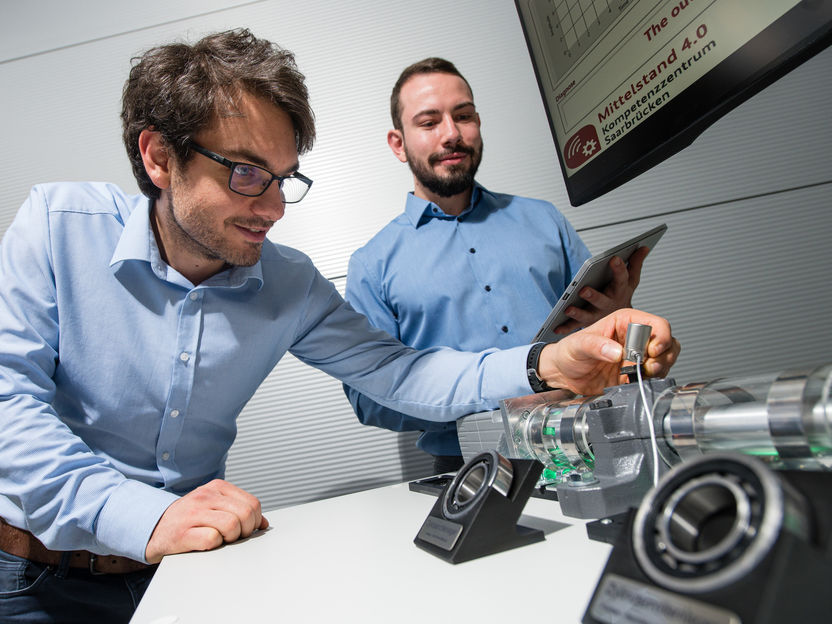In search of the Island of Stability
An international team has now measured the nuclear masses of two unstable superheavy elements for the first time. The results will help to predict the stability of even heavier elements.
Researchers from eleven institutions have made the first precise measurements of nuclear shell effects in artificially produced superheavy elements with more than 100 protons. They did so by “weighing” atomic nuclei with the most accurate scales available for such exotic elements, the SHIPTRAP mass spectrometer at the GSI Helmholtz Center for Heavy Ion Research in Darmstadt. The data will help theorists to localize the “island of stability”, even heavier elements that are expected to have longer lifetimes than their highly unstable relatives.
Short-lived triumphs
The creation of a new superheavy element is normally a short-lived triumph, as most nuclei with over 100 protons undergo rapid radioactive decay, due to the mutual repulsion between these positively charged particles. Only certain combinations of protons and neutrons provide sufficient binding energy to confer long-term stability, thanks to the influence of quantum mechanical shell effects. In the case of artificially synthesized superheavy elements, the precise combinations that characterize this island of stability are still uncertain.
The international collaboration, which included Privatdozent Dr.Peter Thirolfof LMU, measured the magnitude of the shell effects in the transuranium elements nobelium (102 protons) and lawrencium (103) directly for the first time. The nuclei of both elements have 152 neutrons, which is regarded as a particularly stable number. “The results give us valuable information on the nuclear structure of superheavy elements, and also tell us something about the island of stability,” says Thirolf.
Magic numbers
It is generally assumed that the most stable atoms are those whose nuclei possess certain “magic” numbers of protons. This is true for isotopes containing 2, 8, 20, 28 50 or 82 protons or neutrons. Theoretical considerations suggest that their stability is related to the fact that the proton or neutron shells possess the maximum allowed number of particles. Some theoretical models of nuclear structure suggest that the next magic number for protons is 114, others give values of 120 or even 126.
These predictions are difficult to test experimentally because the rate of production of superheavy elements is extremely low. In the new study, only around 50 atoms of the isotope 256lawrencium were collected by the SHIP filter in the space of 93 hours. The team at LMU contributed the apparatus with which the nobelium and lawrencium ions could be transferred into the SHIPTRAP system for precision measurement of their masses relative to the nuclear mass of reference ions.
Lifetimes unknown
The new data on the exact strengths of the shell effects allow one to test competing theories of nuclear structure. “We can now test the best currently available models for the heaviest elements,” says Thirolf. This in turn will help to pin down the position and size of the islands of stability for superheavy elements on the nuclear landscape. Then physicists will confront the next question. How stable are these exotic nuclei? Do they have lifetimes in the hundreds, thousands or maybe even millions of years? suwe
The study was carried out by a team of researchers from the universities of Giessen, Granada, Greifswald, Heidelberg, Mainz and Padua, as well as LMU, the Max Planck Institute for Nuclear Physics in Heidelberg and the Nuclear Physics Institute in St. Petersburg, and was coordinated by the Gesellschaft für Schwerionenforschung (GSI) in Darmstadt and the Helmholtz Institute in Mainz (HIM).
Original publication
Most read news
Original publication
Organizations
Other news from the department science

Get the chemical industry in your inbox
By submitting this form you agree that LUMITOS AG will send you the newsletter(s) selected above by email. Your data will not be passed on to third parties. Your data will be stored and processed in accordance with our data protection regulations. LUMITOS may contact you by email for the purpose of advertising or market and opinion surveys. You can revoke your consent at any time without giving reasons to LUMITOS AG, Ernst-Augustin-Str. 2, 12489 Berlin, Germany or by e-mail at revoke@lumitos.com with effect for the future. In addition, each email contains a link to unsubscribe from the corresponding newsletter.



























































